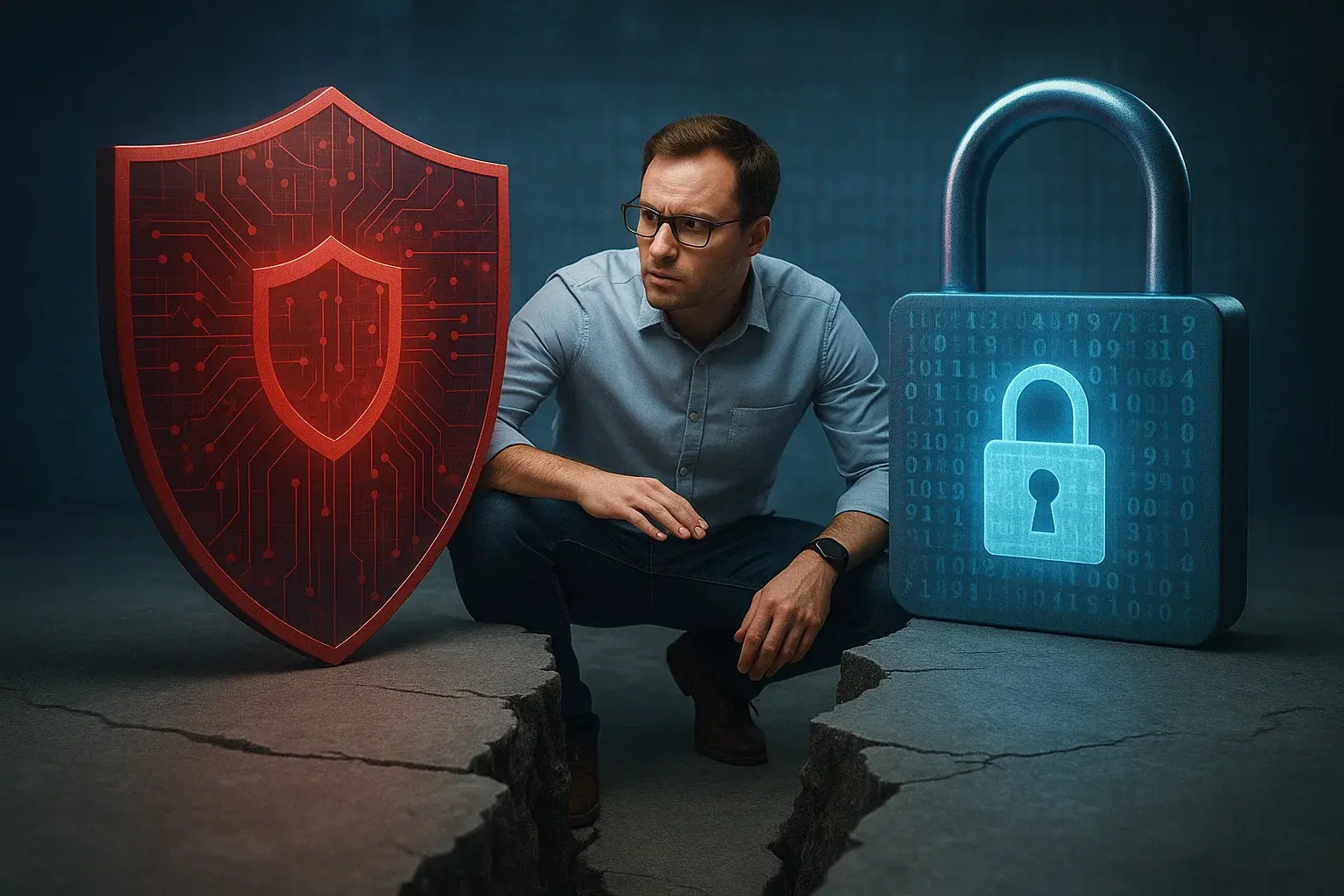No matter how advanced technology becomes, digital security still depends on one unpredictable element: people. Their habits, decisions, and actions can either strengthen an organization’s defenses or create its weakest link.
The Arctic Wolf 2025 Human Risk Behavior Snapshot (2nd Edition) reveals an uncomfortable truth: employee behavior and executive overconfidence are creating a perfect storm for data breaches and cyberattacks.
At TecnetOne, we analyze the key findings and explain how to bridge the gap between perception and reality in cybersecurity.
Breaches Are Rising While Leaders Stay Overconfident
The data is alarming: 68% of organizations suffered a security breach in the past year, an 8% increase over 2024.
Yet, three out of four IT leaders still believe their companies are well-protected against phishing attacks — confidence that reality doesn’t support.
According to the FBI, more than $6.3 billion was stolen in 2024 through Business Email Compromise (BEC) scams, and 72.9% of these incidents started with phishing.
Even more concerning, nearly two‑thirds of IT leaders admitted to clicking a malicious link themselves — and one in five never reported it.
This highlights a cultural issue: fear and shame prevent transparency.
If leaders don’t report their own mistakes, how can employees feel safe to do so?
AI: Productivity Booster or New Threat?
The rapid adoption of generative AI has revolutionized productivity but also introduced new risks that most organizations don’t fully understand.
The report shows that 80% of IT leaders and 63% of employees use AI in their daily work — yet 60% and 41%, respectively, have entered confidential data into public tools like ChatGPT or Claude.
The issue isn’t AI itself, but data control. Once uploaded, information can be stored, analyzed, or reused without consent, creating major privacy and compliance risks.
At TecnetOne, we stress the need for clear corporate AI usage policies, limiting access to approved tools and using secure environments for sensitive data.
Similar titles: Why should CEOs make cybersecurity a priority?
Security Basics Still Failing
Despite technological progress, many breaches occur because organizations fail at the basics.
Only 54% of companies enforce multi‑factor authentication (MFA) across all users, even though MFA drastically reduces the risk of unauthorized access.
Lower-level accounts — such as temporary or external users — often lack even minimal protection, becoming easy entry points for attackers.
Cybersecurity doesn’t always require larger budgets — it requires consistent application of known safeguards.
From Fear to Learning: Building a Culture of Resilience
A worrying trend highlighted by the report is the rise of punitive approaches.
In 2024, 66% of IT leaders said they would fire an employee for falling for a phishing scam. In 2025, that figure rose to 77%.
This fear-based culture backfires — employees hide mistakes instead of reporting them, allowing small incidents to grow into full-blown crises.
Companies that favor education over punishment reduce risk by up to 88%. The key is to promote a resilient culture that encourages openness and continuous learning.
At TecnetOne, we believe in this philosophy: teach, don’t punish. Every incident can become a learning opportunity when teams feel supported and informed.
The Human Element: Weakest Link or Strongest Defense
The Arctic Wolf report reinforces a fundamental truth: cybersecurity is not just a technology problem — it’s a human one.
The most damaging breaches rarely stem from technical flaws but from human error — a single click, an unchecked attachment, or a reused password.
That’s why user awareness and training are as vital as firewalls and antivirus software.
A strong security culture aligns everyone — from executives to frontline employees — around shared responsibility.
To achieve this, organizations should prioritize:
- Ongoing, role‑based training
- Clear policies for emerging tech like AI
- Safe channels for incident reporting
- Leadership that leads by example
Cybersecurity as a Shared Responsibility
Overconfidence is the enemy of security. The most resilient organizations view cybersecurity as everyone’s responsibility, not just the IT department’s.
From the boardroom to the front line, every action matters. One informed employee can stop an attack before it happens — one careless one can open the door to disaster.
Technology alone isn’t enough. Security requires processes, training, and transparent communication working together.
Learn more: Cybersecurity, IT Security and Information Security
TecnetOne’s Recommendations
Drawing from the Arctic Wolf report and our own expertise, TecnetOne recommends:
- Assess your security culture — use surveys and phishing simulations.
- Encourage transparency — reward prompt reporting instead of punishing mistakes.
- Apply fundamental controls universally — MFA, password management, and updates are non‑negotiable.
- Define AI and data‑handling protocols — approve secure tools and limit exposure.
- Make cybersecurity part of daily routine — not just an annual exercise.
Conclusion
The human factor will always be both the greatest challenge and greatest asset in digital defense.
No firewall or AI model can replace awareness, responsibility, and trust.
At TecnetOne, we believe a strong security culture isn’t enforced — it’s built.
And that begins with recognizing that cybersecurity is not just about systems — it’s about people.

